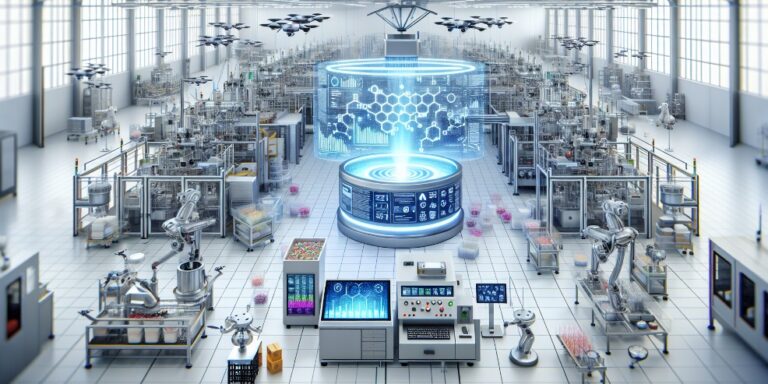India, with its vast population and geographically diverse landscape, has long faced the challenge of delivering equitable healthcare to all its citizens. Over the past few years, the country has embarked on an ambitious digital transformation journey in the healthcare sector. Driven by innovations in Artificial Intelligence (AI), Internet of Things (IoT), cloud computing, blockchain, and Big Data, the emergence of Smart Healthcare Systems is setting a new benchmark for health services—making them more accessible, affordable, efficient, and patient-centric.
What is a Smart Healthcare System?
A Smart Healthcare System integrates advanced digital technologies to monitor, diagnose, treat, and manage health conditions in a more effective and data-driven manner. From Electronic Health Records (EHRs) and AI-powered diagnostics to telemedicine platforms and wearable health devices, these technologies offer real-time solutions and enable informed clinical decisions. For India, this digital leap is crucial for overcoming systemic gaps in infrastructure, especially in rural and remote regions.
Pillar 1: Ayushman Bharat Digital Mission (ABDM)
Launched by the Government of India on September 27, 2021, the Ayushman Bharat Digital Mission (ABDM) is the cornerstone of India’s digital health ecosystem. It aims to develop an interoperable digital infrastructure that securely connects patients, healthcare providers, insurers, and policymakers under a unified platform.
Achievements as of 2025:
Over 45 crore ABHA IDs have been generated.
Millions of health records are now digitized and accessible via PHRs.
Thousands of hospitals and doctors are digitally onboarded.
ABDM integration with platforms like eSanjeevani and CoWIN has demonstrated its real-world impact.
Pillar 2: eSanjeevani – National Telemedicine Service
India’s telemedicine flagship, eSanjeevani, is a transformative initiative developed by C-DAC and implemented by the Ministry of Health and Family Welfare. Designed to bridge the healthcare divide between urban specialists and rural patients.
Key Highlights (as of 2025):
Over 180 million consultations completed across all 36 states and UTs.
Integrated with 1.3 lakh+ Health & Wellness Centres.
Services available in 22 regional languages, ensuring inclusivity.
Widely used by armed forces, rural populations, and public health institutions.
Artificial Intelligence and Big Data: Enhancing Precision and Planning
AI is revolutionizing medical diagnostics, decision-making, and public health management. In India, AI-driven solutions are already being used for:
Radiology and Pathology Diagnostics: Startups like Qure.ai and Niramai employ AI to detect tuberculosis, brain hemorrhages, and breast cancer through innovative imaging techniques.
Predictive Analytics: AI systems forecast disease outbreaks and predict patient deterioration. Early warning systems for sepsis and vector-borne diseases like malaria are being deployed in hospitals and public health programs.
Clinical Decision Support Systems (CDSS): These tools assist doctors by analyzing patient data to reduce errors and standardize treatment.
Virtual Assistants and Chatbots: Used for triaging, mental health support, appointment scheduling, and patient education in multiple regional languages.
Big Data, on the other hand, is enabling:
Population Health Management: Through large-scale analytics of Electronic Health Records (EHRs), health inequities are identified, and interventions for non-communicable diseases (NCDs) are optimized.
Personalized Medicine: Data-driven treatment tailored to a patient’s genetic makeup and history ensures better outcomes.
Operational Efficiency: Hospitals use data for resource planning, supply chain management, and reducing wait times.
IoT and Remote Monitoring: Healthcare at Your Fingertips
IoT (Internet of Things) devices have brought a paradigm shift in chronic disease management and preventive care.
IOT includes:
Wearables and Smart Devices: Gadgets like smartwatches, digital BP monitors, glucometers, and ECG patches provide real-time monitoring of vital signs.
Smart Ambulances: Equipped with GPS, telemetry, and video conferencing to offer real-time communication with hospitals.
Connected ICUs and Home Care: Technologies such as Dozee are transforming beds into remote-monitoring ICU units in public hospitals.
These technologies support continuous health monitoring, reduce hospital readmissions, and empower patients, especially in remote areas. Initiatives like Apollo Hospitals’ remote care services and AIIMS-Tata Elxsi collaborations highlight the growing impact.
Cybersecurity and Blockchain: Safeguarding Digital Health
As healthcare becomes more digitized, the importance of cybersecurity and data protection is paramount. With India generating huge volumes of sensitive health data, the risk of cyberattacks and data breaches has increased significantly.
Key Challenges:
Weak digital infrastructure, especially in rural and semi-urban hospitals.
Inadequate training of staff in digital hygiene and security protocols.
By Sachin Chandrakumar Narwadiya, Scientist D
Institute of Advance Study in Science and Technology-IASST, Guwahati
Subscribe to read full article.
